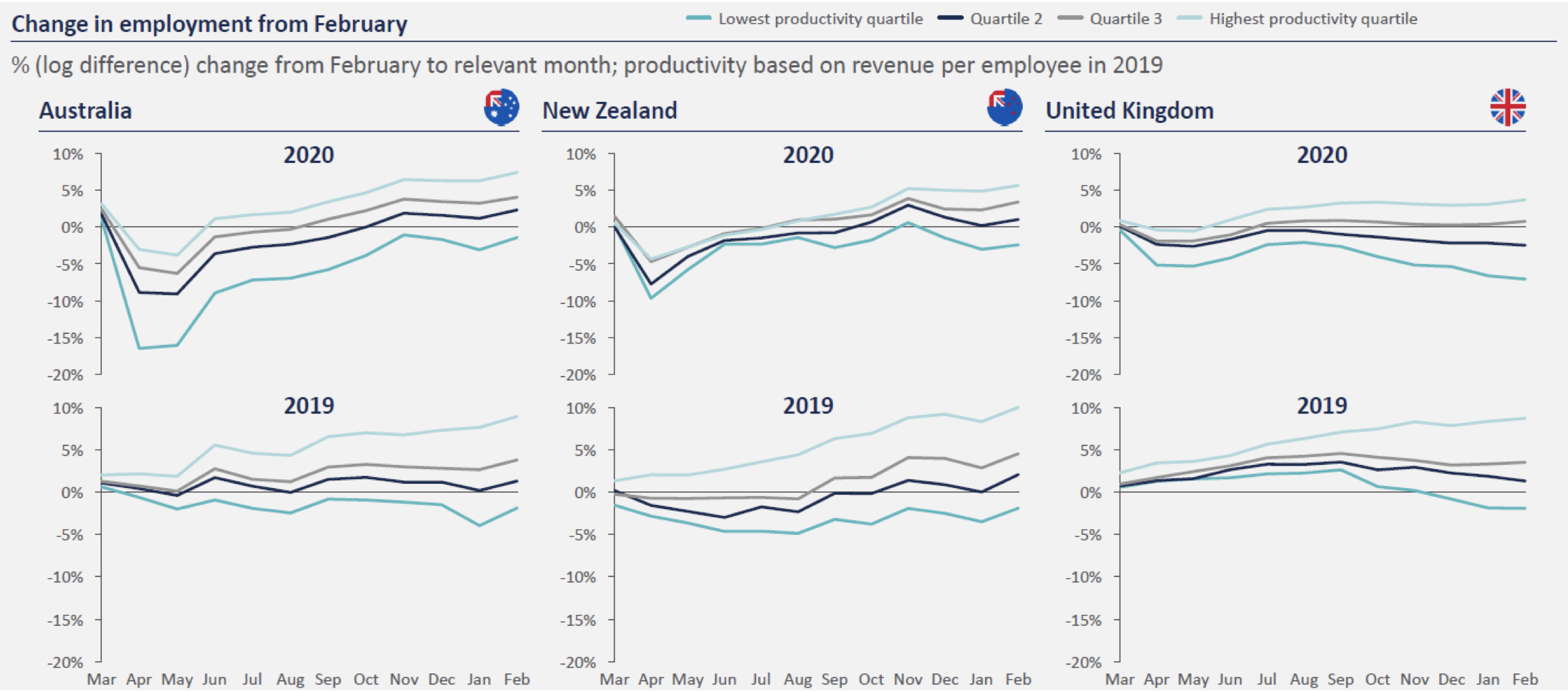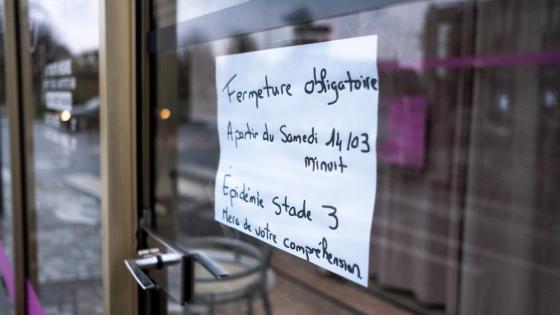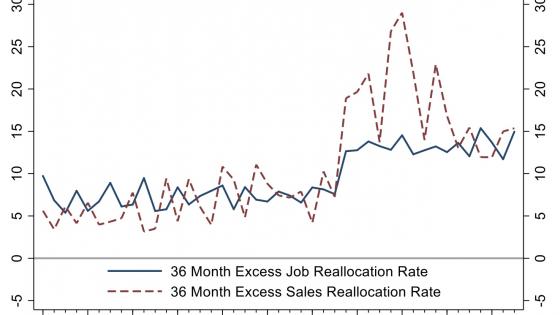The economic consequences of the Covid pandemic will partly hinge on its impact on the process of labour reallocation from low to high productivity firms. While Schumpeter proposed that recessions can accelerate this ‘cleansing’ process, downturns can also distort reallocation dynamics if financial constraints result in the premature shakeout of productive but financially fragile firms. The pandemic could provide a further twist on the cleansing hypothesis if the widespread use of job retention schemes risks zombification by delaying the timely restructuring of low productivity firms. But timely evidence on this issue is scarce.
Against this backdrop, our recent paper (Andrews et al. 2021) explores the consequences of the pandemic for productivity-enhancing reallocation in Australia, New Zealand, and the UK – the first such cross-country evidence. We contribute to the international literature by using high frequency firm-level data from Xero – a cloud accounting platform. Xero is highly representative of the small business community and contains traditional balance sheet variables (e.g. jobs, turnover) as well as novel variables (e.g. hours worked, technology adoption) that are rarely available in the extant firm-level datasets.
Covid-19: Cleansing or scarring?
We estimate how firm-level employment changes since the onset of the pandemic are correlated with a firm’s pre-shock level of labour productivity, while controlling for the differences in the nature of the shock across country-region-industries and firm size classes. This approach is guided by a host of empirical studies (e.g. Decker et al. 2020, Andrews and Hansell 2021) which show that high (or low) productivity firms are more likely to expand (or contract) and takes its structure from the canonical models of firm dynamics (Hopenhayn 1992, Hopenhayn and Rogerson 1993) and adjustment costs literature for employment dynamics (Cooper et al. 2007).
We find evidence of partial hibernation but not zombification. While the overall rate of job reallocation fell, a non-trivial share of firms were still adding and shedding workers. Crucially, these workforce adjustments remained connected to firm productivity within sectors. On average across countries, high productivity firms were more likely to expand their workforce and low productivity firms to contract – a pattern evident on both the extensive (heads) and intensive (hours) margins. Moreover, this dynamic was particularly evident in hard-hit sectors (e.g. Hospitality, Arts & Recreation). These results are broadly consistent with evidence which suggests that cleansing dynamics remained intact in France during the pandemic (Cros et al. 2021) and runs counter to the zombification hypothesis.
Temporary cross-country differences in the reallocation-productivity link emerged over the first six months of the pandemic, relative to the same period in 2019. Productivity-enhancing reallocation dynamics accelerated in Australia and to a lesser extent the UK – as indicated by a larger employment growth gap between firms in the top and bottom productivity quartiles – following the onset of the pandemic (Figure 1). By contrast, the reallocation-productivity link weakened in New Zealand, with the employment growth differential between high and low productivity firms narrowing considerably over 2020, compared to 2019.
Figure 1 Evolution of firm-level employment by (within industry) labour productivity quartile
(estimated log change in employment since February, purged of correlates)
Source: Andrews et al. (2021).
The role of job retention schemes
Closer inspection reveals that New Zealand was able to engineer a more extensive economic hibernation – with fewer firms shedding labour over the initial months of the pandemic – than Australia. But the flip side was that the restructuring of low productivity firms was stymied in New Zealand, which put a break on the expansion possibilities of more productive firms.
These cross-country differences appear partly connected to the design of job retention schemes for at least two reasons. First, New Zealand’s wage subsidy scheme (17 March) was announced almost two weeks earlier than Australia’s JobKeeper Scheme (30 March), enabling the former to more effectively contain the rise in job destruction. Second, New Zealand’s wage subsidy scheme was the most comprehensive in the OECD in terms of the share of the workforce covered, while the corresponding figure for Australia was a bit below the OECD average (OECD 2020).
Technology adoption enhanced resilience
Finally, firms that intensively used e-commerce (e.g. Stripe, Square) or other types of apps (e.g. cashflow reporting, inventory management to manage their business) were more resilient, even after controlling for productivity. Estimates imply that firms with five or more apps connected (pre-pandemic) experienced one percentage point higher employment growth than similarly productive firms that had fewer than five apps connected (or none). One implication is that app usage – while not yet fully reflected in firm productivity – may reflect a budding organisational and technological capability, which helped them to capitalise on new growth opportunities induced by the pandemic.
Conclusion
While policy partly stymied creative destruction, the nature of the shock – i.e. one where being online and able to operate remotely were key – potentially favoured high productivity and tech-savvy firms, resulting in a reallocation of labour to such firms. The greater resilience of high productivity and tech-savvy firms is significant, given that an indiscriminate shakeout of such firms would have imparted lasting scars on the economic fabric. It also partly alleviates concerns of widespread zombification – stemming from the use of job retention schemes – that may crowd-out growth opportunities for productive firms, as was the case in Southern Europe in the wake of the Great Recession (Adalet McGowan et al. 2018).
Of course, the pandemic may affect productivity through other channels – for example, human capital accumulation, global knowledge spillovers, and technology adoption – which operate over longer time horizons. Nevertheless, the use of timely data to investigate the allocative effects of the pandemic marks a significant advance, given that the seminal paper on reallocation during the Great Recession arrived some six years after Lehman Brothers collapsed (Foster et al. 2014).
References
Adalet McGowan, M, D Andrews and V Millot (2018), “The walking dead? Zombie firms and productivity performance in OECD countries”, Economic Policy 33(96): 685–736.
Andrews, D, A Charlton and A Moore (2021), “COVID-19, Productivity and Reallocation: Timely evidence from three OECD countries”, OECD Economics Department Working Paper No. 1676.
Andrews, D and D Hansell (2021), “Productivity-enhancing labour reallocation in Australia”, Economic Record 97(317): 157-169.
Cooper, R, J Haltiwanger and J Willis (2007), “Search frictions: Matching aggregate and establishment observations”, Journal of Monetary Economics 54(supplement 1): 56–78.
Cros, M, A Epaulard and P Martin (2021), “Will Schumpeter catch COVID-19? Evidence from France”, VoxEU.org, 04 March.
Decker, R, J Haltiwanger, R S Jarmin and J Miranda (2020), “Changing business dynamism and productivity: Shocks vs. responsiveness”, American Economic Review 110(12): 3952-3990.
Foster, L, C Grim and J Haltiwanger (2014), "Reallocation in the Great Recession: Cleansing or Not?", NBER Working Paper 20427.
Hopenhayn, H (1992), “Entry, exit, and firm dynamics in long run equilibrium”, Econometrica 60(5): 1127–50.
Hopenhayn, H and R Rogerson (1993), “Job turnover and policy evaluation: A general equilibrium analysis”, Journal of Political Economy 101(5): 915–38.
OECD (2020), “Job retention schemes during the COVID-19 lockdown and beyond”.







